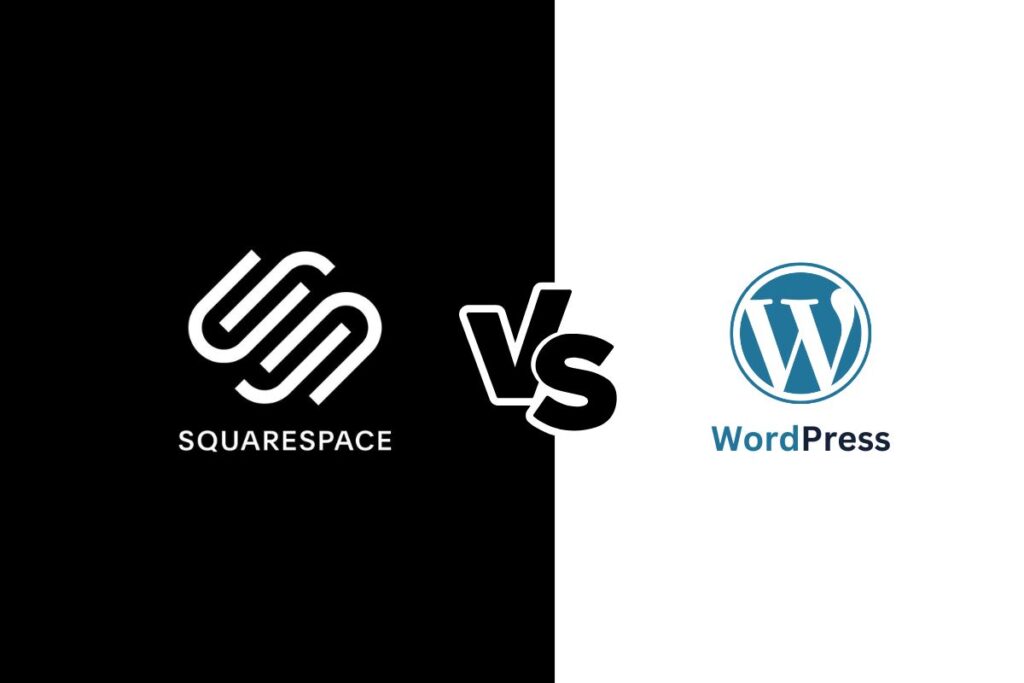So you have created a website on Squarespace after planning it for a long time. But lately, you have noticed that it is underperforming in ranking. An effective way to improve that would be SEO optimization. Wondering how to do SEO on Squarespace?
Doing SEO for Squarespace websites is a lengthy but beginner-friendly process of multiple steps, which begin with sufficient keyword research, preparing high-quality content, optimizing the titles, using keywords in meta descriptions and headings, simplifying URLs, etc.
There are other methods, too, some simple and some advanced, increasing the odds of your website ranking higher on Google. We will illustrate a DIY guide for beginners to learn how to do SEO, particularly for Squarespace websites. You will find a comprehensive yet easy-to-understand discussion below.
But first, let’s do the basics from the beginning.
What Actually SEO Is?
Short for Search Engine Optimization, SEO refers to boosting your website’s visibility in different search engines, i.e., Google, Yahoo, Microsoft Bing, etc. Simply put, when we search for something on Google, we see the most relevant content on the first page, right?
Those websites score higher than the ones on the following pages regarding SEO optimization. So, there is a greater chance that users will find what they are looking for in the content and click on them.
Thus, SEO optimization helps attract users to become clients, audiences, or customers that will come back in the future to seek more in the top-ranked websites. As a result, your authority and reliability will improve as the search engines recognize your website as an authentic and credible source.
Does Squarespace Support SEO?
That is a common query of newcomers because SEO will not be of use if Squarespace does not support it. But the good news is that it does.
It has multiple built-in features enabling it to accommodate SEO optimization. For example:
Site Map
A site map provides all the information about your site’s pages and videos as a file while connecting them together.
In some platforms, you have to create a site map manually, but Squarespace will update your site with it as soon as you launch it. Afterward, it will make adjustments per any changes you make.
SSL Certificates
They give your website protection and ensure the user about the security of its connection. Integrated into Squarespace, it will also be linked with your site when you build it.
However, you have to do one thing here. Go to your settings and check that the connection shows secure there.
By-Default Mobile Optimizations
Google prefers mobile-friendly websites and prioritizes them when users search for something. When you start working on Squarespace with the template, your site will automatically become mobile-responsive.
It will resize the images and videos to align with different mobile phones and their screen widths. That will come in handy for SEO-optimized content.
Well-Built And Clean Interface
Each post and page has its own configuration box to enter meta descriptions and titles. It is a plain feature, but again, that makes learning how to do SEO with Squarespace more beginner-friendly. None of its main features will require you to have coding knowledge.
How To Do SEO On Squarespace

Now that you know what SEO is, how it helps you enrich your Squarespace website, and what features make the platform SEO-friendly, it is time to learn how to do it. Let’s begin!
Researching On Keywords
First, you should focus more on optimizing your topic and understanding the user’s intent. Only working the simple keywords will not do it.
So, prioritize them because they are very effective at optimizing a site and will bring you relevant topics with common user queries.
List the keywords or key phrases your content should target. Search them on Google to get an idea about your rivals and evaluate the potential challenges. When assessing the competition, look at the site’s authority, social signals, and reputation.
Do not make the mistake of overoptimizing a post because that will not generate positive results. Although there is no clear direction about how many times you should use a keyword, the usual places to apply it are the title, headers, and several times in texts.
We recommend you prepare the post first and then go about reviewing and revising your keywords. Remember that it is not about just adding or increasing the use of keywords but about making the content truly relevant and serving the user’s needs.
Preparing High-Quality Posts
Algorithms are now smarter and more advanced than before. So, the only effective way to put them to your advantage is by preparing high-quality posts.
You have to give your target users something they will not get from your rivals. It has to be reliable, easy to understand, and beneficial so that your content caters to their questions.
Regarding that, we found in the Search Engine Journal that websites offering in-depth content rank higher than the rest. And it is simple. People prefer informative and detailed content organized in a single place.
That requires you to formulate a strong content strategy. As you are here to learn how to do Squarespace SEO, consider incorporating the following criteria for your game plan.
- Always keep your content focused on the user’s intent. Be specific in addressing that.
- Keep your writing tone natural. That excludes overusing a keyword and includes using different wording relevant to the subject.
- Emphasize quality at all times. Remember that the searchers want precise and useful information. If they have to skim through pages to find what they need, they will not come back to your site again.
Optimizing The Page Title
Page title settings are set by default on Squarespace. However, you can customize them from the SEO tab of the settings option.
Now, what is the best way to optimize the titles of your Squarespace website’s content?
The short and neat answer to that question is to be concise. Site owners often prefer unique and catchy wording.
But if you think, we do not use thesaurus when searching on Google. We simply type the exact words. So, make it to the point to get better reach while creating an impression with it.
Likewise, use fewer than 60 characters for your titles. It should be engaging and descriptive. Apply your keywords, of course, but maintain some variation too.
Note!
If you use Squarespace 7.1, remember to remove the boilerplate language based on the page type, i.e., Contact 3 or Blog 2.
Applying Keywords In Meta Descriptions And Headings
- Use <h1> for your headings containing the content’s keyword. For subheadings, switch to <h2> and <h3>. If your page has multiple sections, applying several H1 components will be acceptable, according to Google.
- Meta descriptions are briefs of the pages showing up in the search results. Although they do not have much to do with ranking, they can grab people’s attention and get them to visit your pages.
- Note that Google often pulls figments of your content’s texts to generate better results. That is irrelevant to writing or not writing a meta description.
Look at the table to create meta descriptions on different pages.
| Home Page | Settings -> SEO Appearance -> SEO Site Description |
| Individual Pages | Pages -> Page Settings -> SEO -> SEO Description |
| Blogs, Events, And Products | Select the post or event -> Edit -> SEO -> SEO Description |
Simplifying URLs
Google prefers a simplified URL structure. So, even if you have a lengthy title, try shortening its URL. For example, if your title is ‘How Many Times To Water A Snake Plant?’, you can structure the URL like this: www.mysquarespacesite/blog/watering-snake-plants.
- Look at the example above. The words contain hyphens for better readability. Also, there is no redundancy because a short URL is easy to read.
- Check that your URL has real words. Sometimes there are unnecessary URL slugs on Squarespace. It happens when you add a title after saving an event or blog, a group of meaningless characters taking place in the URL.
- Changing an already existing URL means moving the associated web page. In that case, you need to use URL redirects and avoid broken links. That is a sophisticated process. You can look it up on the internet or, better, ask for professional assistance.
Improving The Photos
Optimizing the photos on your Squarespace site will give the searcher a better user experience. You can do that easily by reducing their file size before posting on your site.
You can also add metadata to the images to provide information about them. It will give the site visitor some context.
When uploading an image, you will find a box beneath it to put its file name. You can fill it with some keywords pertaining to your content.
Eliminating Duplicates
As a website owner, you must know that copying other sites and duplicating their content is not acceptable. When it comes to optimization, you should be careful not to do that to keep your URLs from going for similar queries.
You can check whether the built-in domain of your Squarespace website has already been indexed. If so, Google’s index will display duplicate pages.
Cleaning up the content is essential to keep your site sustainable. Other than using the Google Search Console, you can use SEO tools like CopyScape, Screaming Frog, and SiteLiner.
Creating Internal Links
When preparing your content, see if you can create internal links with similar blog posts and pages to lead your readers to more information. It will help search engines and site users discover and check out your content.
Listing The Area
If your business has a physical address, put it on your website to let your clients find you. Every well-organized website should feature a page named Contact.
Applying Hreflang
Some owners have multilingual websites on Squarespace. If yours is one, you can try applying the Hreflang labels when learning how to do SEO in Squarespace. That will enable you to take your content to your target audience of different areas and languages.
Adding Schema Markup
Schema markup, commonly referred to as structured data, is used to place in the code of a site to achieve rich snippets in a user’s search results.
Rich snippets are not featured snippets. Do not get confused between the two. The first one combines little pieces of additional information to give users more hints about your blog post.
For instance, sports blogs can show statistics and numerical records. If you have events, you can attach the time of upcoming episodes.
Understand that the schema markup will not dramatically improve your rankings, at least not directly. Nonetheless, the rich snippets will distinguish your posts from others and raise your CTR or Clickthrough Rate.
Optimizing Voice And Mobile Search
Capturing traffic generated by voice search and mobile search is important if you are keen on doing SEO on Squarespace. Always maintain relevance for your site visitors.
Your content should make them feel that it was intended for them. Revise your posts and modify them before uploading them.
When you optimize your site well enough for Google and other search engines, you should opt for mobile optimization next. Then again, check the page speed using the Google speed tool. Mobile users prefer it more than computer users.
Furthermore, voice search can give you an edge regarding SEO for Squarespace. They typically feature more words, often more targeted. Of course, they should also be engaging and purpose-serving at the same time.
Creating A Custom 404 Page
A 404 page acts as a signal informing users when they cannot access a page due to a broken link. It is an unavoidable occurrence for growing sites. Oftentimes, a user will mistakenly make a typo in the URL or enter a link you changed and forgot to update.
Even though websites on Squarespace get a built-in 404 page, you can customize one too.
A common misunderstanding about creating a 404 page supports that it should redirect a user to the site’s Home page.
But we do not advise that because it could create a poor impression. Site users may get frustrated upon discovering that the page they want to access does not exist.
Now, how do you benefit from a 404 page? Search engines record the time users usually spend on your site. You can get that information and put it to use by SEO optimizing your content. It will guide your audience to surf your site and seek what they need.
Making Well-Written And Well-Structured Content
As a website owner, your strong suit should be at making well-written and well-structured content. Beginners can refine their skills by learning more about writing and structuring blogs. Plus, comply with the best practices to make readers stick to your site.
It may even allow you to get featured snippets, and the answer boxes shown above search results.
Understanding Google’s Guidelines On Quality Content
The quality content guidelines of Google are incredibly helpful in giving you a hand at trying how to do SEO with Squarespace. You will find a clear and well-directed path to making highly engaging content to rank upward in search results.
Perusing such guidelines and applying them is no fun, yes. But rest assured, all your time and effort into it will pay you off big time.
Final Words
As you saw, there are many ways to get your way around how to do Squarespace SEO as a beginner. It was a DIY guide for you to start from scratch. Your Squarespace site ranking will score higher after you follow the guidelines and utilize the platform’s SEO facilities.
However, while you can spontaneously initiate some methods on your own, some may appeal too advanced to some of you, where you can always seek professional SEO services. Paired with that, your dedication and efforts to your website will outrival your competitors by attracting more audiences in no time.
Frequently Asked Questions
Q. Does it help to integrate a Squarespace website with social media platforms?
Yes. Sharing your website content on social media platforms will enhance its SEO considerably. Besides, it will raise user engagement, driving more traffic to the site.
Q. Is it better to do SEO on Squarespace than WordPress?
That depends on your expertise and tools. You can do SEO on both platforms, which have their pros and cons. For example, Squarespace is highly SEO-friendly, with many basics installed by default. On the other hand, WordPress is more time-consuming but also more customizable.
Q. How do I choose the most suitable template to do SEO on Squarespace?
Squarespace suggests considering a few factors to choose a suitable template, i.e., the structure of your content, your styling preferences, and the features you want. Plan them in a way commensurate with the best practices of Squarespace.
Q. How much is the cost of doing Squarespace SEO?
The cost basically depends on your expected optimization level. Provided you follow the above DIY guidelines for beginners, the price will be from $100 to $150, varying with your purposes and demands. As for professional expertise, it will charge you between $2,000 and $7,500 per service package.






